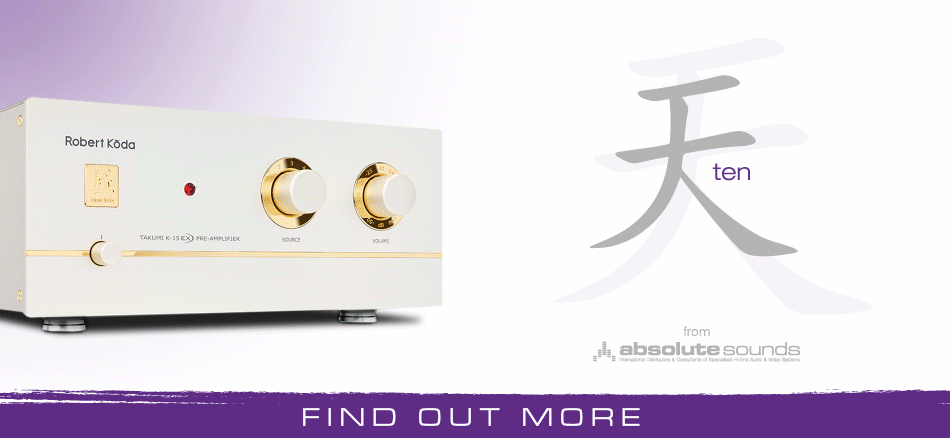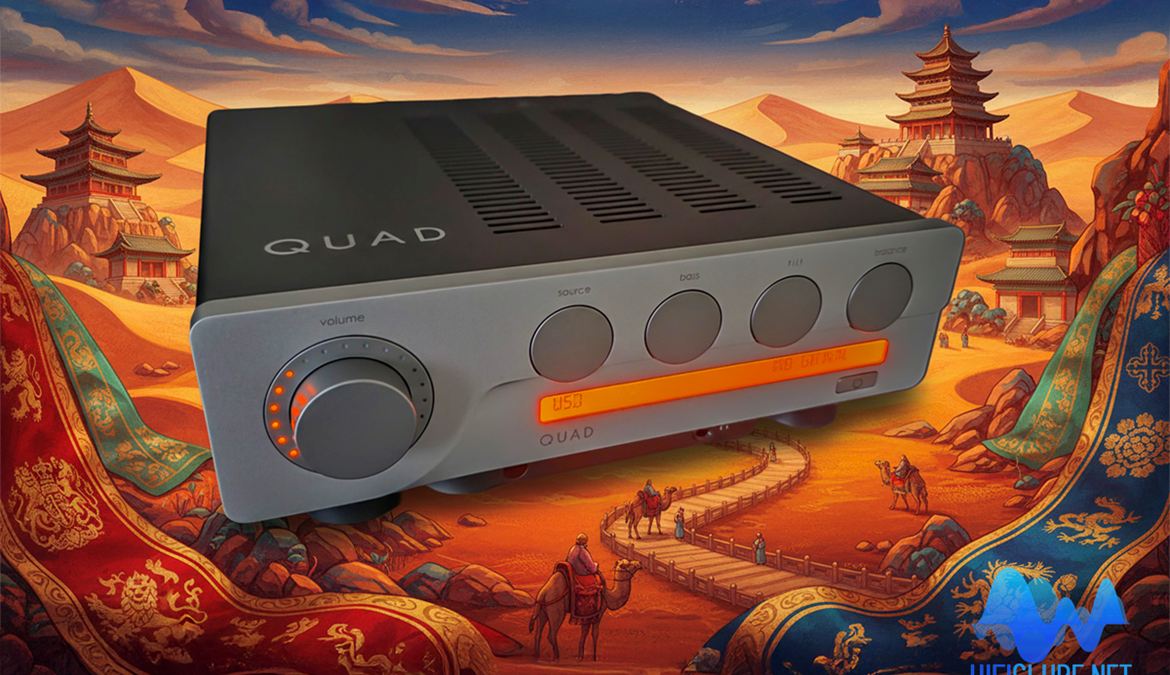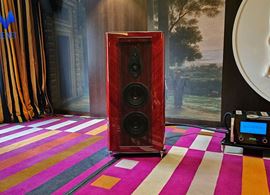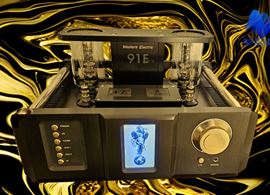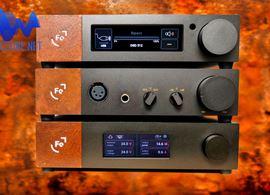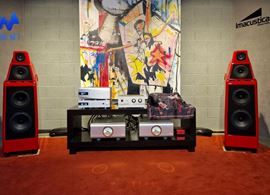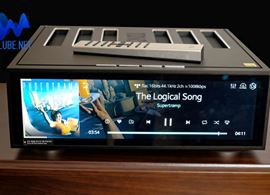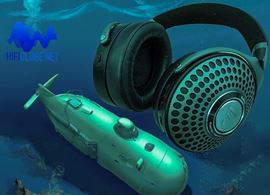Following the success of the 33/303 duo, IAG now offers the QUAD 3 integrated amplifier/DAC, for just € 1,489, rekindling our audiophile youth with a few nods to the past whilst respecting the present.
When QUAD 22, the valve amplifier that inspired the current solid-state QUAD 3, was introduced in 1960, I was not old enough to commit myself to the audiophile arts. However, I cannot say the same about the QUAD 33/303, which ignited this passion in me after comparing it with the modest Pioneer that brightened my days with music, or so I thought.
It was this radically different experience that led me to devote the rest of my life to the search for the Holy Grail: the absolute sound, or what comes closest to real sound—fortunately, without ever quite achieving it because it would make my job as a reviewer redundant.
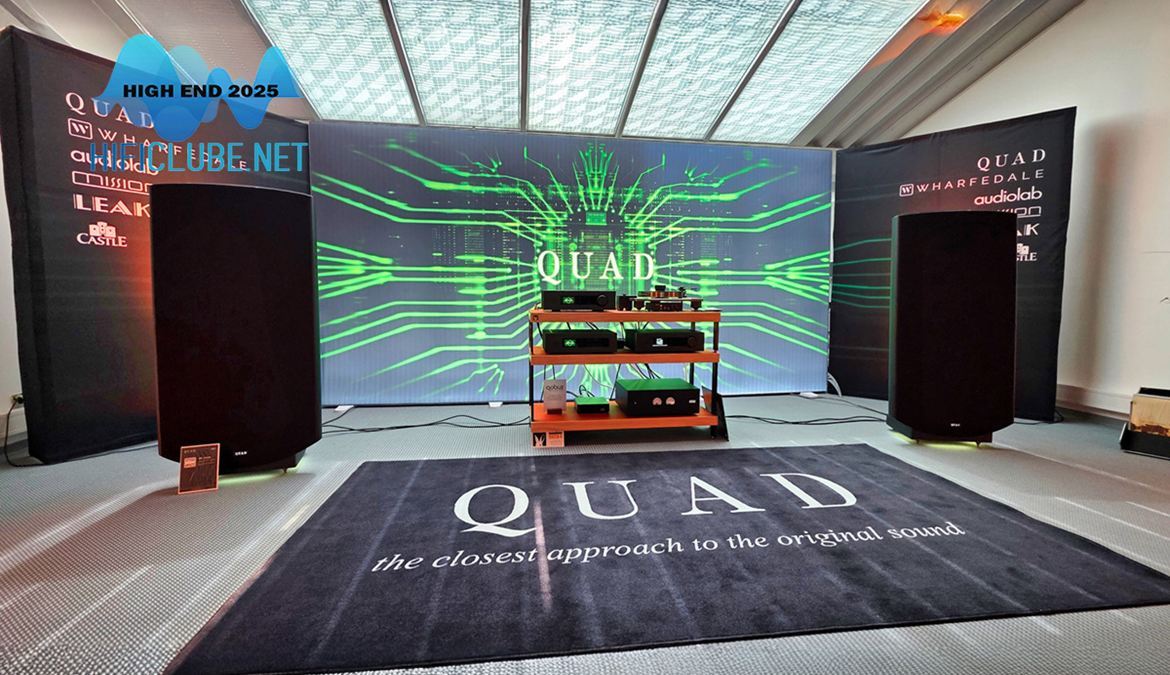
The new QUAD ELS 2912 X being demoed at the High end 2025, Munich.
Meanwhile, much water has passed under Tower Bridge: The British Empire has collapsed, while the industry survives today by selling iconic audio brands to Chinese companies, such as Wharfedale, Audiolab, QUAD, Castle, Mission, and LEAK, which, to be fair, have been treated with respect and dignity. A good example is IAG's efforts to improve what was already nearly perfect from the start: the QUAD ELS 63, which was demonstrated at High End 2025 in its latest version: QUAD 2912 X.

Original QUAD FM 3 Tuner
QUAD Streamer 3
At present, IAG has not yet dared to ‘touch’ the ELS57, but following the 33/303 duo and now the QUAD 3, all that remains is the FM 3 to complete the rebirth of this classic trilogy.
The FM3 used a shoemaker's cord (I swear!) as the transmission chain from the rotary button to the tuning needle. I speculate that it will now be launched as a streamer, since DAB is dead and buried and FM is only heard in cars. I bet that's why the QUAD 3 has DAC and Bluetooth but no built-in network player. The QUAD Streamer 3 is on its way!
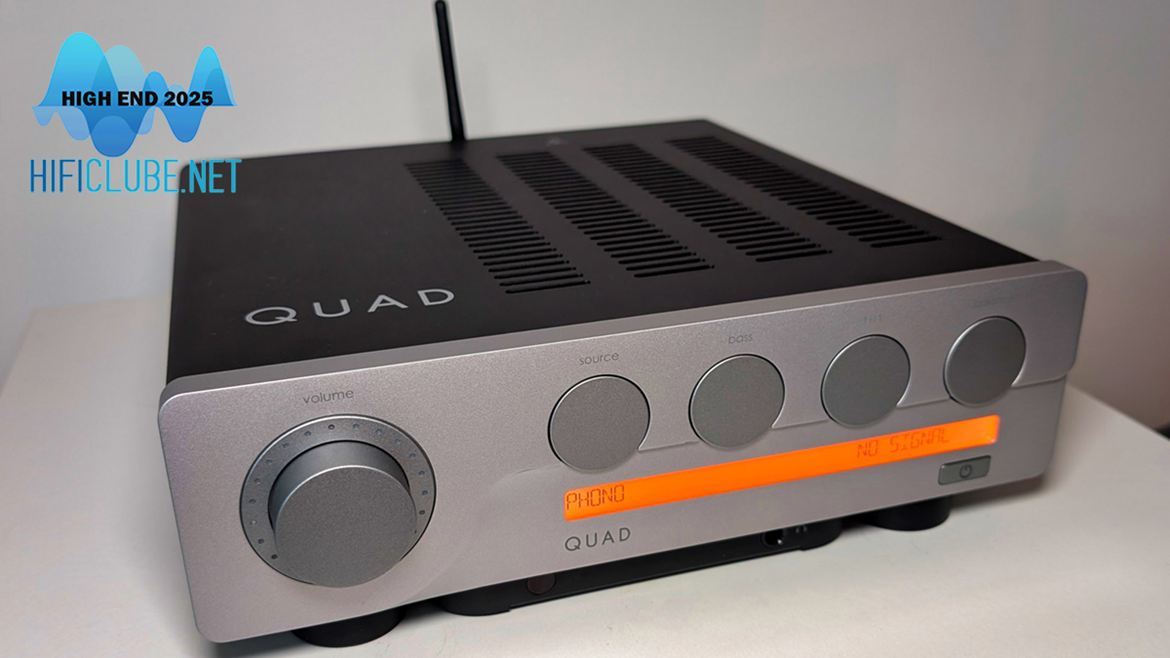
QUAD 3 first show at High End 2025, Munich.
At HighEnd 2025, the last one held in Munich, the audio ‘circus’ now moves to Vienna, Austria, in 2026. The QUAD 3 was presented almost anonymously, which piqued my interest and curiosity. Finally, it is now playing in my work studio, thanks to the kindness of Imacustica, although I still hold out hope of testing the 33 + 2 × 303, which only bears the name and design of the original. Well, it also shares the same amplification circuit principle.
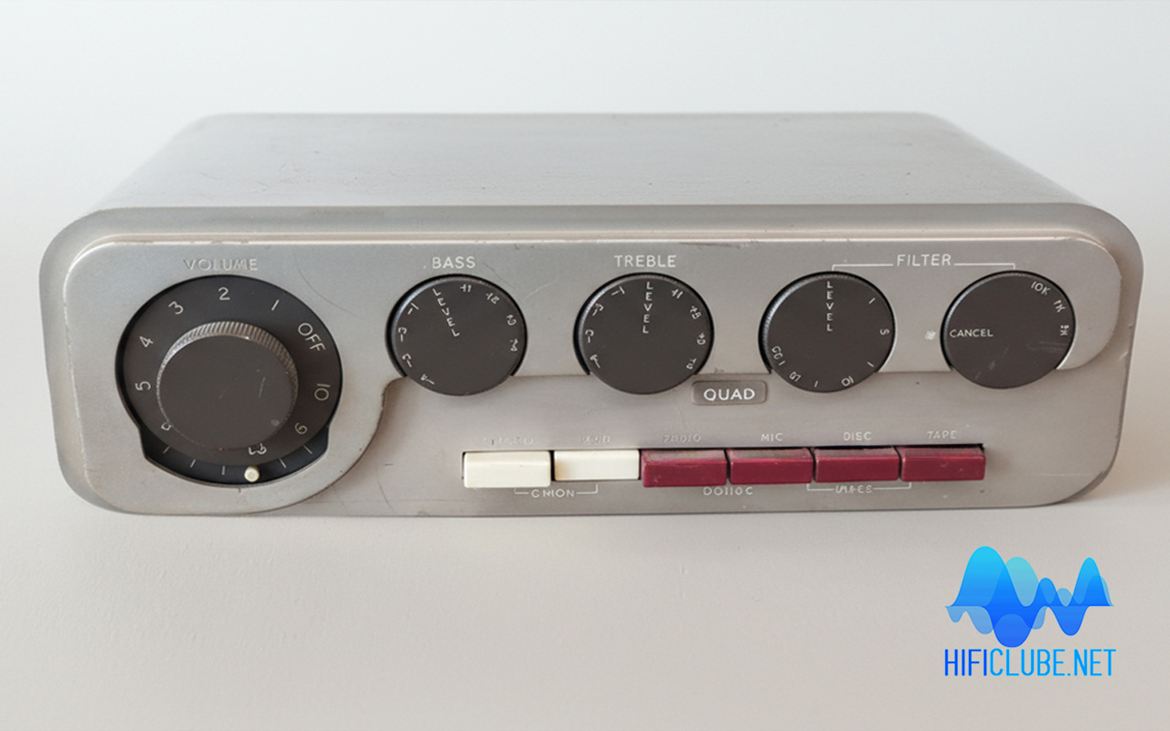
Original QUAD 22 Tune Integrated Amplifier circa 1960.
In fact, I don't understand why they didn't keep the original name QUAD 22. All they needed to do was add an 'i': QUAD 22i. Is it to better rhyme with forthcoming Streamer 3? I wonder.
Or perhaps it's because they share little in common beyond the inspiration for the front panel with its five rotary knobs. Otherwise, there are three-quarters of a century of technological evolution between them: from valves to transistors and from analogue purity to digital hybridity.
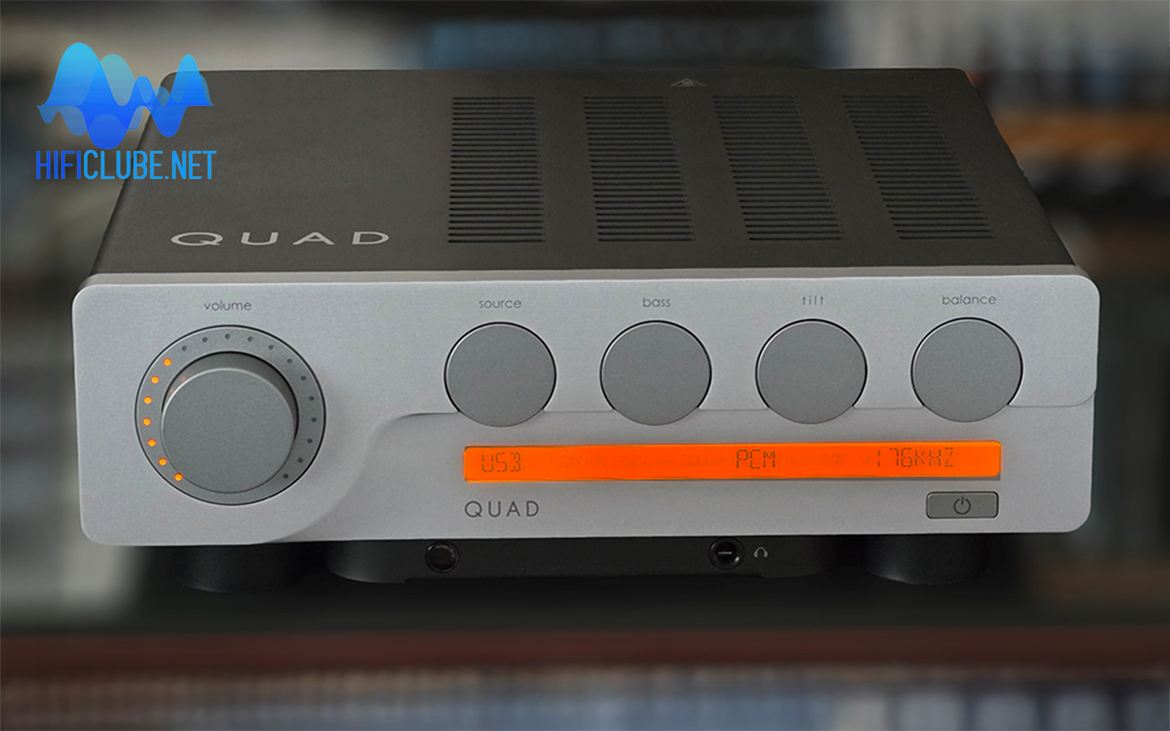
The front panel is dominated by five rotary knobs, the largest being the volume control, which features a luminous arc of orange LEDs.
The front panel is dominated by five rotary knobs, the largest being the volume control, which features a luminous arc of orange LEDs that let you see its position even from a distance. Pressing it switches it to mute mode, where it flashes.
The LEDs appear when you adjust the volume and disappear after a few seconds (OFF mode). However, they can stay lit in ON mode. I like to see them illuminated to offset the excessive brightness of the display bar, which can also be adjusted (Backlight Level) or turned off (OFF).
However, although this display is of little practical use—mainly because it is impossible to read the information from a distance—if you turn it off (it never switches off completely), you will lose the revivalist cosmetic effect, which replaces the space previously occupied by the push buttons on the QUAD 22 panel, which serves as its main visual attraction.
The four smaller buttons are, respectively, for selecting sources and adjusting the bass, tilt, and balance between channels. The tilt, which QUAD drew from Peter Walker's historical archive, adjusts the bass/treble centred at 700 Hz. The push buttons on the QUAD 22 have been replaced with an orange bar display, so thin that it resembles a CD player slot drawer, and shows the selected source or function.
Slightly recessed and concealed beneath the panel are the 6.35 mm headphone output (which disconnects the speakers) and the remote-control IR sensor.

QUAD 3 back panel with analogue and digital inputs.
The rear panel showcases the modern facet of this vintage model. It features two analogue RCA and MM Phono (+ground) line inputs and a preamplifier output (for connection to the 303, for example), as well as digital inputs: coaxial, Toslink optical, USB-B, HDMI-ARC, and a Bluetooth antenna. The QUAD 3 warrants better-quality speaker terminals: they accept spades, but bananas only fit halfway.
Besides the five digital filters—Linear Fast/Slow, Minimum Phase Fast/Slow, and Hybrid (Linear Fast + Minimum Phase Fast)—which can be selected remotely (very useful for making comparisons, though the differences are minor).
The QUAD 3 also features MQA Mode, which is available in Full Decode B mode with Upsampling (352.8/384kHz) and in Full Decode A mode (without Upsampling). There is also a passthrough mode, which disables the MQA filter. I chose this one, as it is less susceptible to locking errors.
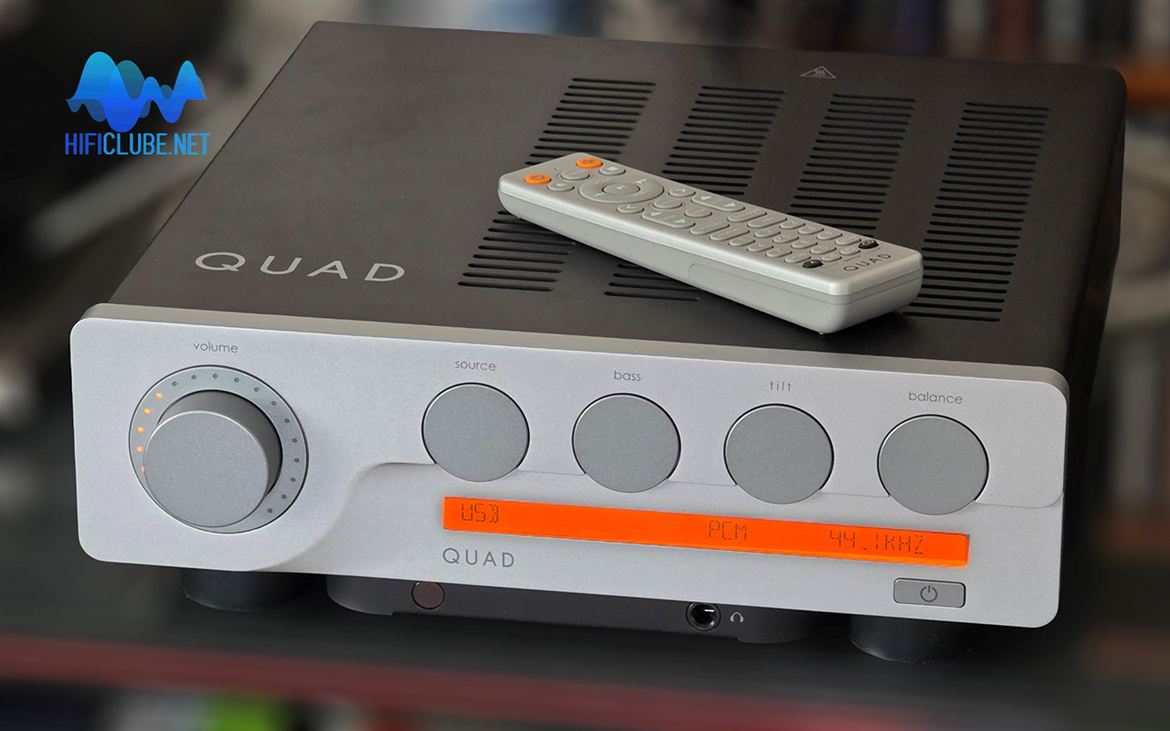
QUAD 3 with remote control on top.
What's missing: an app?
Sometimes apps become more of a hindrance than a help. The remote control is lightweight, practical, and effectively handles all essential functions. Moreover, once you've set the tone and digital filter to your preference and adjusted the sensitivity of the various inputs, you'll mainly rely on the volume control.
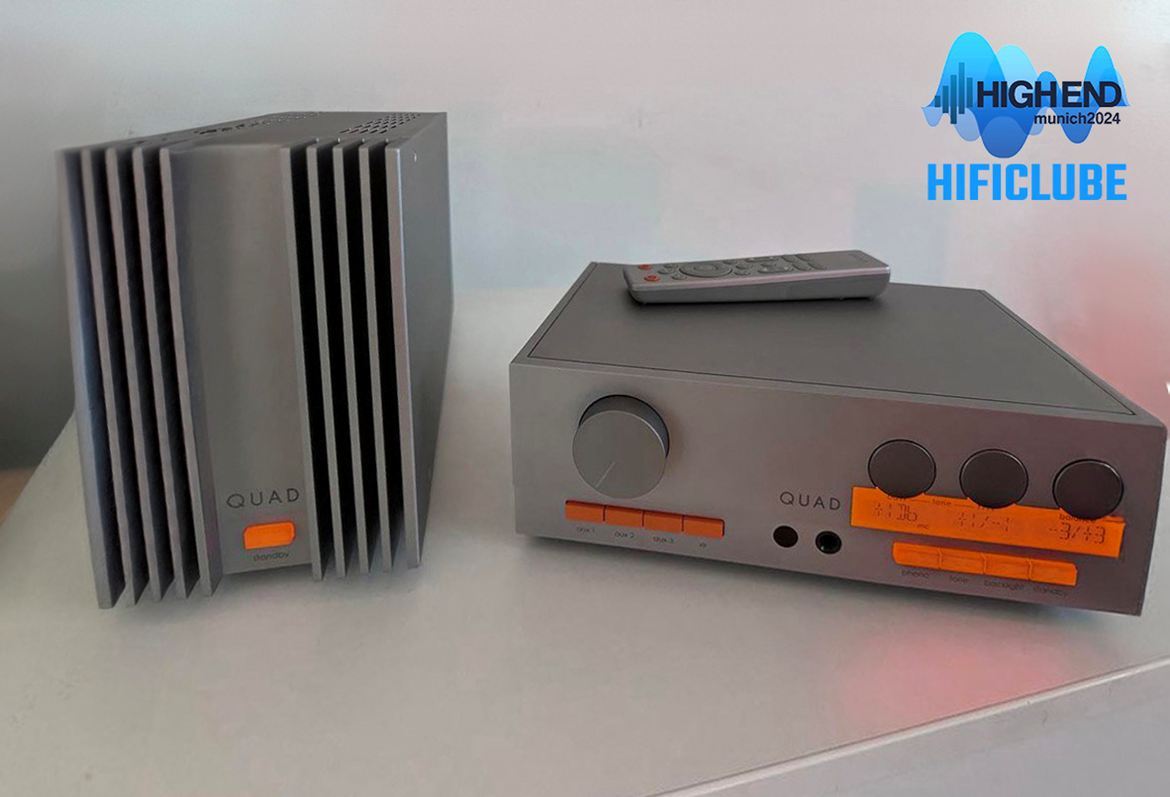
QUAD 33/303 2024 vintage edition.
QUAD seems committed to helping me rekindle my youth as an audiophile. Following the revival of the 33/303, the new QUAD 3 integrated amplifier serves as a more versatile unit, featuring mid-20th-century aesthetics, modern ergonomics, extensive connectivity, and a price that appears frozen in time. It's one of those rare instances where the eyes are drawn to the past, while the ears enjoy modern engineering, enabling us to connect everything to everything, including the smartphone.
A 21st Century Offspring
You just need to look at the specifications to find out the QUAD 3 may be inspired by the 20th century, but it is a 21st century offspring:
- Integrated Class AB amplifier rated at 2×65 W/8 Ω and 2×100 W/4 Ω;
Note: in the lab, my EISA colleague Paul Miller measured: 74/120 W continuous, with dynamic peaks of 91/170/145/80 W (8/4/2/1 Ω); A-weighted noise 92.4 dB, output impedance ~0.025 Ω, response +0/-0.15 dB (20 Hz–20 kHz) and -1.6 dB/100 kHz, and signal-to-noise ratio of 109.3 dB.
- DAC: ESS Sabre ES9038Q2M; USB-B up to 768kHz/32-bit and DSD512; S/PDIF up to 192kHz; 5 filters; MQA Full Decoder (USB and S/PDIF).
Note: In the digital domain, Miller measured an incredible 5 ps of total jitter! This is a state-of-the-art result. The five digital filters exhibit predictable behaviour, with the fast ones being more linear and the slow ones more rounded.
- Inputs/outputs: Phono MM, 2× RCA line, coax/optical, USB-B, HDMI ARC, BT 5.1 aptX/aptX HD, pre-out, 6.35 mm headphones, 12 V triggers.
- Dimensions/weight: 300 × 101 × 332 mm, 8 kg. Reference RRP (PT): €1,500.
From my collection of available equipment, I chose an old Oppo CD player as my source, opting for digital connections: coaxial and optical. I also used an analogue RCA line input. But the Oppo's DAC is not on par with the QUAD 3's DAC. So, I went back to the first option.

The QUAD 3 features a high resolution low jitter DAC.
To test the maximum resolution (768 kHz/32 bits, DSD512 and MQA), I used my PC to play high-resolution native and MQA files stored on a hard drive with JRiver (Wasapi only) and Roon; the latter performed better, as it met the stated maximum limits, including DSD512.
For PCM up to 192 kHz, I used the digital transport of the BlueSound Node Icon network player, which played files from Tidal and Qobuz in digital passthrough mode via a USB connection. To test Bluetooth, I employed a Galaxy S25 streaming from Tidal. It's a pleasant experience because it's practical, but the sound is slightly opaque compared to the excellence of USB. Nothing new: the same happens with all the other brands.
Alternatively, the QUAD 3 has an MM phono input, but honestly, I've lost patience with the LP ritual, even though it once inspired me one of my best articles.
I connected the QUAD 3 to two pairs of resident monitor speakers: Sf Concertino and Radiant Acoustics Clarity 4.2, as well as several other headphones, including the Hifiman HE1000 and Austrian Audio The Composer. The QUAD 3 had no trouble handling the temperamental nature of the Clarity 4.2 and the stubbornness of the Hifiman HE1000, both of which have low impedance and low sensitivity. The Composer, on the other hand, is a piece of cake, as I rarely went beyond a quarter of the way around the volume knob.
I played around a bit with the “Bass” and “Tilt” controls. The adjustment is subtle but clearly audible, especially the “Tilt”: turning the knob to the left adds more mid-bass quality, while turning it to the right emphasises the mid-treble. Both should be used sparingly: try +1dB “Bass” and +1/-dB “Tilt”, go any farther, and you'll hear the QUAD gain the classic roundness of vacuum amps, ideal for prolonged listening.
In flat mode, the QUAD 3 sounds clear without being clinical, with transparent mids while the bass shows up when needed without dominating constantly. It’s typical of a FET amplifier with low distortion and a jitter-free DAC. It could have a bit more punch, but QUAD – noblesse oblige – chose a British flavour from the 1970s (Current Feedback) to add a traditional touch to the current trend for pure power in the lab at all costs.
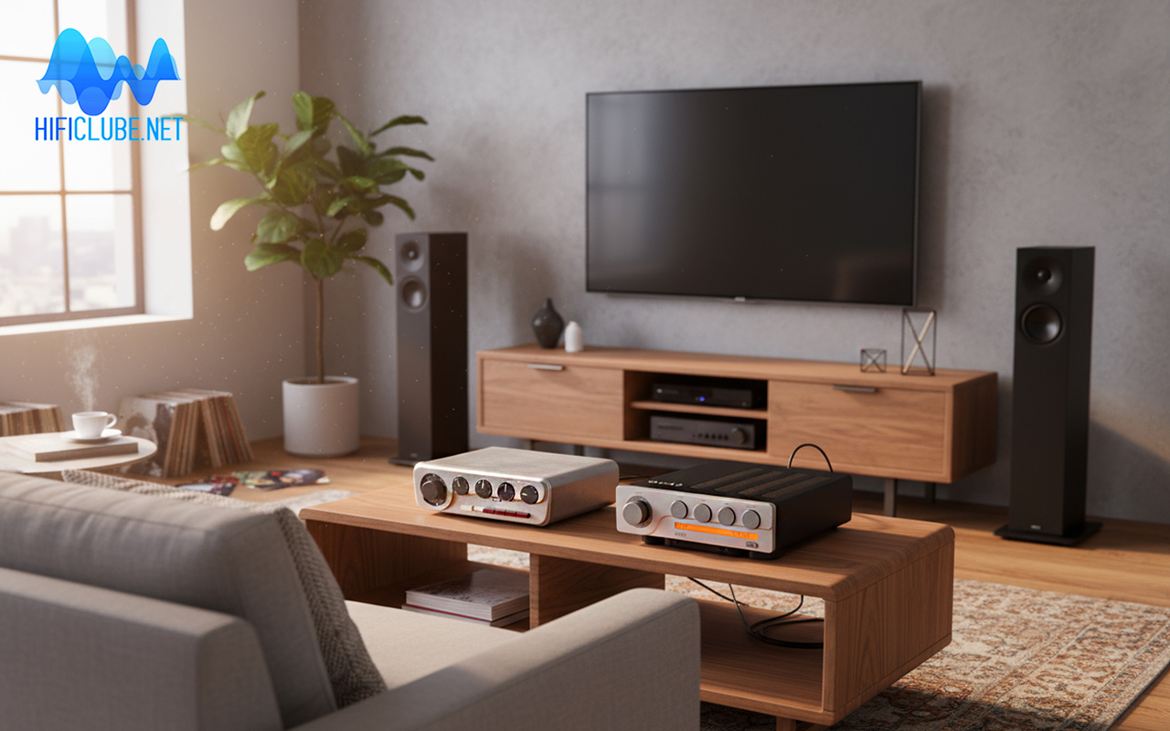
QUAD 22 / QUAD 3 side by side audition recreated by AI.
20th Century Music, 21st Century Sound
‘Dark Side of the Moon’ – ‘Us and Them’ – Pink Floyd (1973)
Us and them
And after all we’re only ordinary man
Me
And you
God only knows
It’s not what we would choose to do
You and me, us and them, we've heard this track a thousand times. It's been over 50 years. God only knows why I chose to listen to it again. Perhaps the QUAD 3 revival has also sparked a music programme revival in me. And how did it sound to me now? If I recall correctly, much better than on my old Pioneer from the seventies. However, I noticed some aggression in the backing vocals that I didn't recall being there. Lowering the tilt by two points and switching from the Fast Linear filter to Slow Minimum helped without affecting the reverb tail. Versatility, after all, pays off.
‘Never Going Back Again’ - ‘Rumours’ – Fleetwood Mac (1977)
She broke down and let me in
Made me see where I've been
Been down one time
Been down two times
I'm never going back again
I'm not sure if I can say I'm never going back. Occasionally, it feels good to return to a place where we were happy. This is a masterpiece by Lindsay Buckingham (vocals and acoustic guitar). Legend has it that he changed strings several times to maintain this glazed tone, enhanced by Marle Travis-style fingerpicking, with his thumb alternating on the bass strings with the syncopated notes produced by the other fingers on the treble strings. This marked the rhythm as he drew arpeggios. I listened one time, I listened two times, and I came back to listen again.
‘Memórias de um Beijo’ – Terra Firme – Trovante (1986)
Memories are like books hidden in dust
Memories are
The smiles we want to see again, slowly
The sound emerges wrapped in a bubble, which expands until it reveals the richness of its contents: Represas' voice, with that unique romantic tenor timbre, hovering over the heavy bass notes that sustain the ethereal keys, torn here and there by João Gil's guitar and the stealth presence of Artur Costa's saxophone. Just as I remember hearing it in the eighties: a memory I want to revisit slowly. Trovante are back on stage. So is QUAD.
Conclusion
QUAD 3 is not a revolution. But neither is it a step backwards. It is the offspring of the QUAD 22, from which it takes its physical resemblance, and the QUAD 33, from which it inherits its colours, tones, and sounds. From its uncle, the 303, it drew inspiration for the amplification circuit topology. The IAG family adopted and educated it in the digital arts of modern times.
The result is an integrated amplifier with DAC, featuring a visually pleasing revivalist aesthetic and technically very competent, with a sound that can be tailored to individual preferences, without sacrificing current trends in clarity and transparency.
The fact that the QUAD 3 costs just €1,489 is a bonus only made possible by the new Asian Silk Road.
For further information and to book an audition, please contact:
In Portugal: IMACUSTICA
In Spain: SARTE AUDIO

